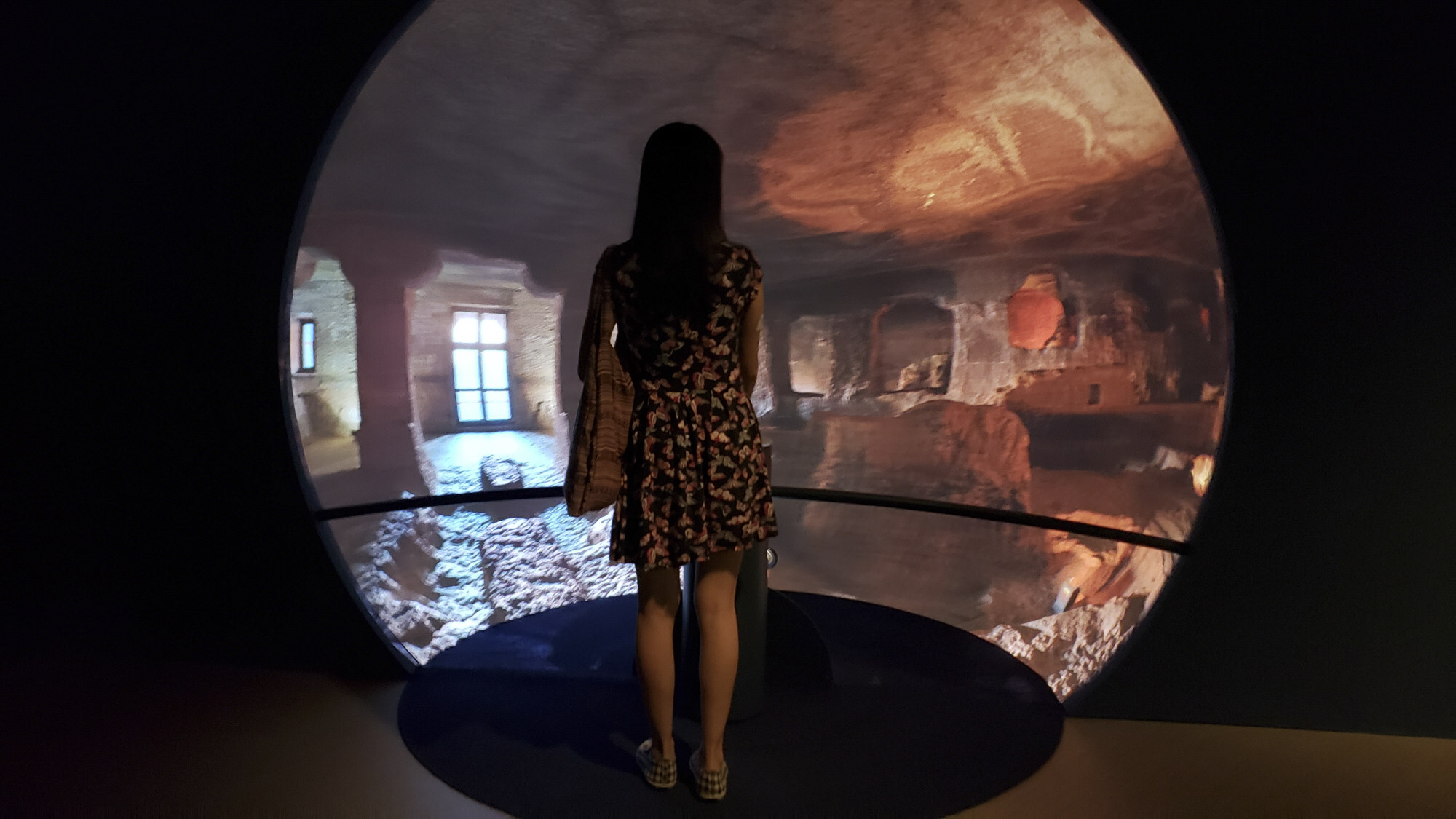
Ancient Buddhist sites linked to Maritime Silk Road explored in Hong Kong video and audio exhibition
- ‘Atlas of Maritime Buddhism’ uses a mix of archaeology, digital imaging, digital media and location shooting to explore historical Buddhist sites
- Borobudur in Indonesia is there, as well as India’s Ajanta Caves and two other cave complexes there, but there are surprisingly few images of cave murals
The preamble to the exhibition “Atlas of Maritime Buddhism” emphasises the division of the ancient Silk Road into land and sea routes. The exhibition at City University of Hong Kong is similarly two-pronged.
It is as much about the historic transmission of a religion and culture that binds diverse Asian nations together as the new technologies being used to capture heritage materials and to present them in a physical museum setting.
The Hong Kong exhibition, which will be installed permanently at Taiwan’s biggest Buddhist monastery when Covid-19 restrictions are lifted, is the result of a six-year, unfinished odyssey that involved an international team of visual and audio archivists traversing seven countries, visiting hundreds of historic sites from India to Indonesia and capturing over 1,000 images and recordings.
While Google offers street views and photos taken inside a lot of these Buddhist sites, the way the “Atlas” team present their visual materials makes for an immersive visitor experience, as well as giving a much-needed break from screens.
This exhibition presents materials from 90 of the sites that the team visited. One highlight is the “panoramic navigator”. Visitors stand in the middle of a 360-degree circular screen and navigate from one country to another using a steering device that resembles a heavy-duty tower viewer.
Once you zoom into a destination, you are shown interactive, life-size panoramas of selected Buddhist sites such as the Great Stupa of Sanchi in India and Borobudur in Indonesia.

Nearby, spherical 360-degree projections navigated with a joystick allow for close-up exploration of the insides of rock-cut grottoes. Included here are two of India’s Ajanta Caves (Nos. 1 and 19) that were made 1,500-2,000 years ago, as well as the less well-known Bojjannakonda Caves and Bedsa Caves.
The “Atlas” project’s focus on sites with a maritime connection (either through their proximity to coastal ports or through artefacts pointing to such connections) means excluding that behemoth of the northern land-based Silk Road – the Dunhuang grottoes whose conservators set the standard for the digital archiving of ancient and fragile Buddhist caves and relics. (Elsewhere along the land route are, of course, sites which are probably most in need of digital archiving and are off limits to researchers today: ancient Buddhist stupas in Afghanistan.)
When Hong Kong was a way station on China’s Maritime Silk Road
The exhibition’s scope is nevertheless ambitious. Following an itinerary suggested by Professor Lewis Lancaster at the University of California, Berkeley, an expert in digitally mapping cultural sites, a field team that includes Professor Jeffrey Shaw, chair professor of media art at City University of Hong Kong, have been to India, Sri Lanka, Cambodia, Indonesia, Thailand, China and Myanmar to archive historic sites there and to film religious ceremonies in some of the temples.
When the pandemic eases, they aim to continue on to Japan, South Korea, Laos and Vietnam for similar research.
Shaw says the exhibition is also an experiment in telling a story through both digital and physical objects. Dotted among the digital stations are platforms with Buddhist sculptures of mixed styles and from different cultures on loan from local museums and private collections.

In addition, there are flat-screen panels that show the 3D scans of important Buddhist sculptures that the team came across during their travels.
Unfortunately, such photogrammetry displays are completely devoid of background, and so a famous sculpture of the devout Khmer King Jayavarman VII is seen spinning in empty space, reminiscent of how so many cultural relics have been violently detached from their context and placed as stand-alone objects in a foreign setting.
One also craves more of the magnificent wall murals that are so much part of Buddhist culture and which, strangely, are rather neglected in this otherwise rich visual display.

Still, this is a wonderfully vivid excursion to faraway lands accompanied by informative text panels about the spread of Buddhism through sea routes, a boon during these travel-starved times.

